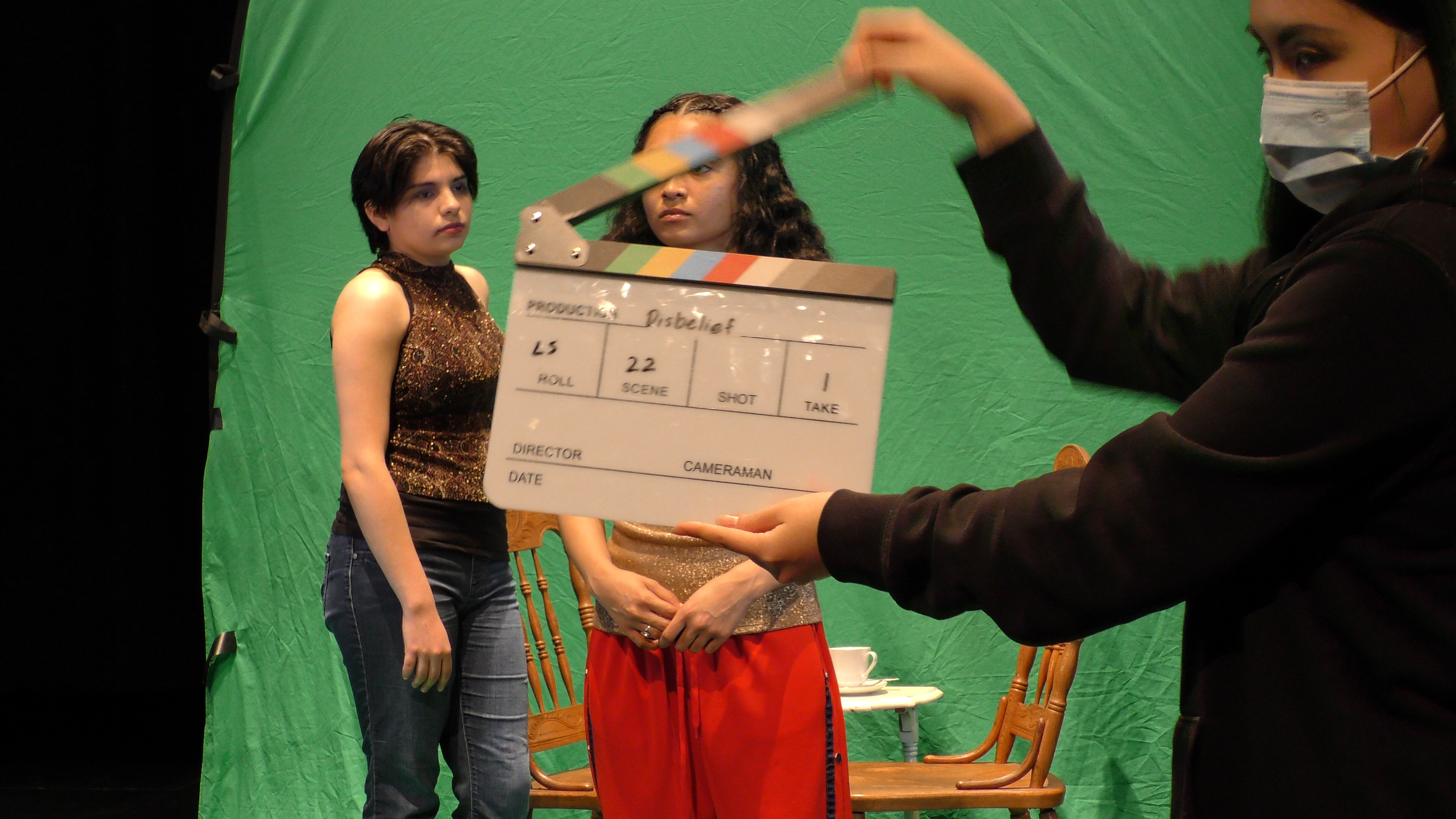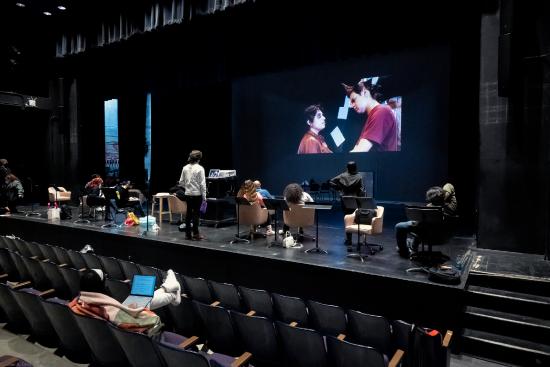6.2: The Director's Commands
- Page ID
- 120184
Let's Go for a Take
We know that the director is in charge on a movie set. It does not matter if there are two people in a scene or dozens, there needs to be a set of established commands so everyone moves in a choreographed way. These simple commands insure everyone and every piece of equipment is ready to shoot at the right moment and keep shooting until the director is satisfied.
I find this version works well with small crews:
The director calls for "Ready" and "Quiet on the set".
Once everyone has settled down the director says "Roll Camera".
Camera operator makes sure the camera is in record and rolling a few seconds then says "Rolling" or "Speed" or "Camera Speed".
If sound is being recorded on a separate device, the director will call "Roll sound".
Sound recorder says "Sound Speed" or "Rolling" once the audio has recorded for a few seconds.
Director calls for the clapper board by saying "Slate" or "Slate it".

In two-crew operations the director will have to slate the scene; with a third crew member, they would take over this usual 2nd AC role. The person operating the slate will recite the text marked on the clapper board. This is a coordinated set of labels based on the script, usually depicted in naming the scene number, short description of the scene and take. Then the slate operator will clap using the hinged section at the top of the the clap board. This aids the editor in syncing up the camera shot with the separately recorded audio. The image of the clapper striking and the one frame of sound click on the track makes this an easy operation. Many of the modern non-linear edit systems can perform this operation automatically.
If this clapper board step was skipped, slates can be added at the end of shots before the director yells "cut". In these cases, the slates held upside down to mark the end of the shot.
Once the scene is slated, the director waits for the slate operator to settle back into their position. The director then calls for "Action". It is best to have the actors wait a beat or two before they start their scene. Editors can easily roll off any unnecessary footage from the beginning of the scene.
Only the Director says "Cut" Unless...
This is the most important part of the process - cast and crew need to heed exactly to the directors commands. At this point they are in character and should not break from their roles. The director can talk actors through a scene which has no dialogue. In post production, editors can eliminate the director's audio cues and replace them with room or other set sounds. Directors will let scenes run through mistakes by the actors because the scenes may still have something to offer in post production. The only commands available at this point comes from the director. Sometimes a director will let scenes run past their expected ends because they see something interesting is happening. Actors must stay in their parts until...
...the director calls "Cut". At this point the actors can stop acting, camera and audio recorder then stop filming. The Director will ask the camera and audio recorders to check if they have recordings. Most directors like to have at least two good takes of a scene before they move on. Once the director is satisfied they have a good take and a good backup take, they may ask the actors to play out the scene once more. This request will become an alternative choice in post production. A director may change some lines, add some blocking, or even ask the actors to overplay some lines and actions to add emphasis to a scene.
Exception to the "Only Director Says 'Cut' Rule"
A camera person may say we have to stop because the camera has ran out of power, the SD card is full, the lighting has changed, or some other technical issue. In this case the DP may say "cut". This procedure though should be worked out ahead of time between the director and DP. A director may want to establish that only his commands be followed so the actors know when it is okay to break their character. A director may still want to run the scene as a rehearsal while the technical issues are worked out.
This short one-minute video demonstrates the Director's Commands on the set.



